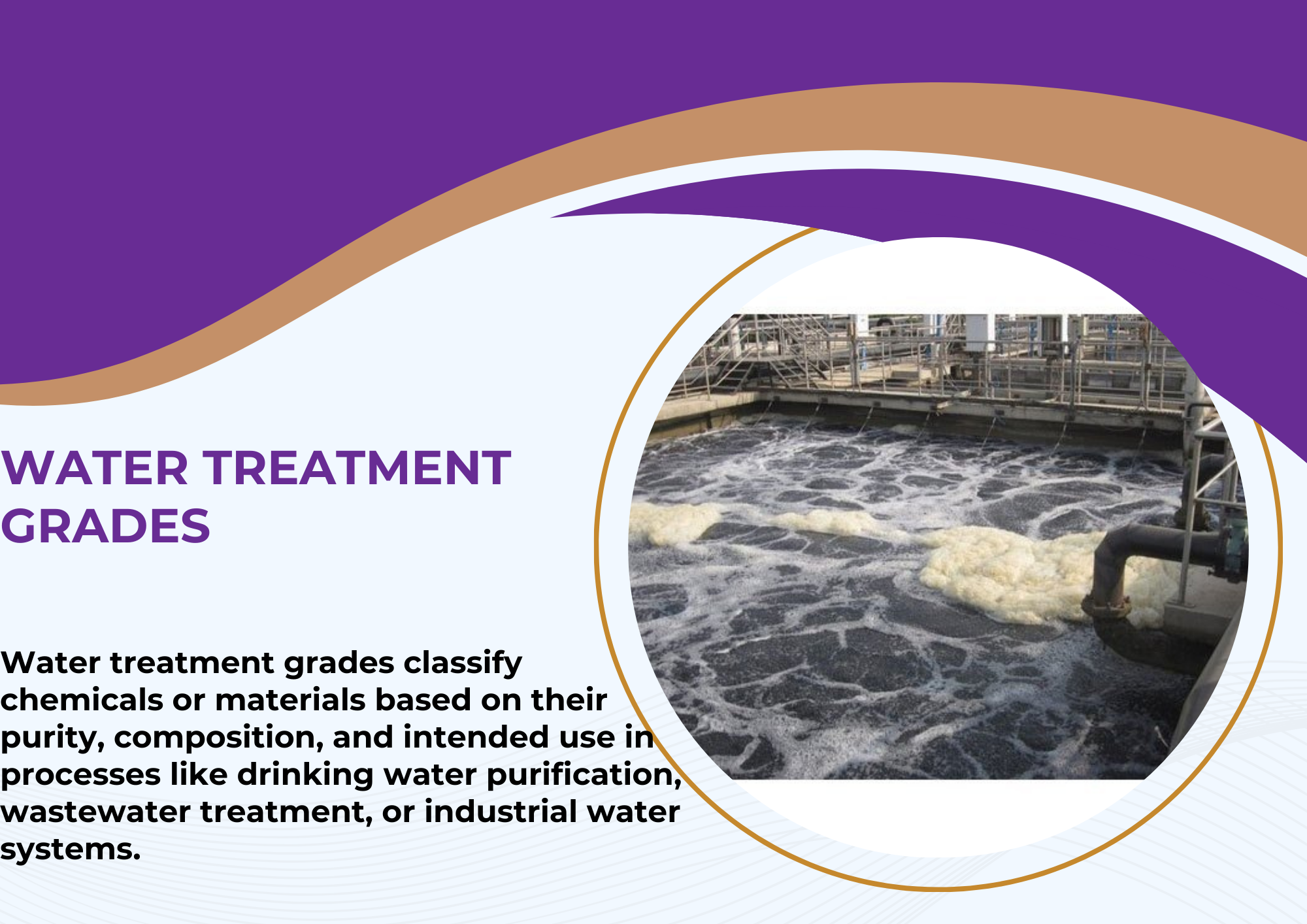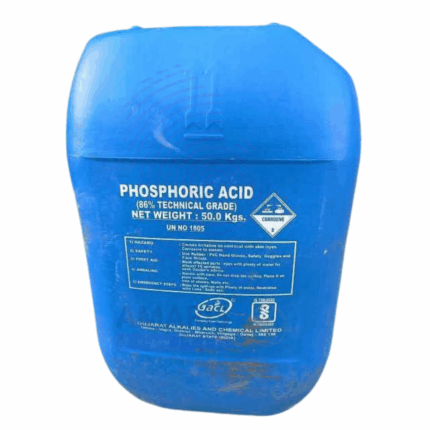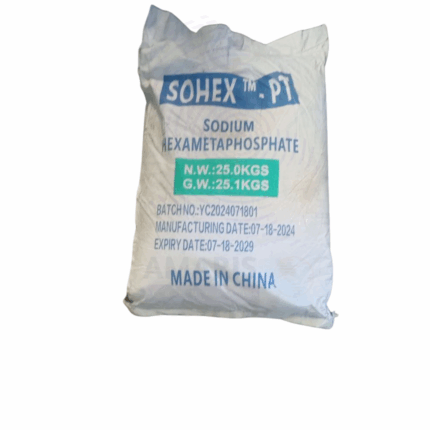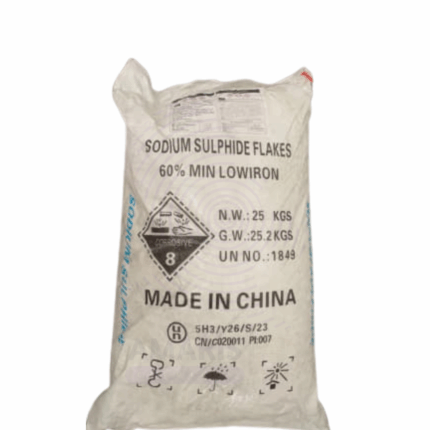Ufanon‑KDS (also known as Ufanon‑CDE)
Ufanon‑KDS (Ufanon‑CDE) is a proprietary blend of chelating and dispersing agents formulated for use in industrial water treatment and boiler systems. It is designed to control hardness, prevent scale formation, disperse sludge and iron deposits, and enhance corrosion protection. The product is typically supplied as a concentrated aqueous solution and compatible with continuous and intermittent dosing systems. It maintains system efficiency and longevity by stabilizing metal ions and preventing deposit buildup.
Primary Uses
Boiler Water Treatment
Prevents precipitation of calcium and magnesium salts, thus reducing scaling and maintaining heat transfer efficiency.
Helps control sludge build-up in feedwater systems and steam boilers.
Stabilizes iron and metal oxides in suspension to prevent deposit accumulation.
Cooling Water Treatment
Controls hardness and prevents calcium carbonate and sulfate scale in cooling towers and recirculating systems.
Disperses suspended solids and iron particles, preventing fouling of heat exchanger surfaces.
Enhances corrosion inhibition by chelating metal ions that catalyze corrosion reactions.
Desalination & Reverse Osmosis (RO) Pre‑Treatment
Prevents scale-forming salts from precipitating on membranes, extending RO membrane life.
Maintains antiscalant and dispersant action in intermediate water chemistry control.
Industrial Process Water
Used in textile, paper, and food processing plants to stabilize water quality, reduce deposits, and maintain cleanliness in boilers, chillers, and piping.
Secondary Uses
Wastewater Treatment
Stabilizes heavy metals in effluent streams, reducing environmental discharge impact.
Aids in flocculation and suspension of oily/waxy contaminants for easier removal.
Metal Finishing & Plating
Prevents scale formation in rinse water and recirculating systems.
Improves dispersion of particulates and enhances surface finish quality.
District Heating & HVAC Systems
Manages scale and iron deposition in hot water heating loops for efficient operation.
Municipal Water Treatment
Occasionally used in drinking‑water preconditioning to control hardness in specific industrial contexts.
Chemical Name (Description): Proprietary blend of phosphonates, polycarboxylates, and dispersants
Common/Trade Name: Ufanon‑KDS or Ufanon‑CDE
CAS Number: Mixture; individual components vary
HS Code: 3809.20.00 (Water treatment preparations)
Synonyms: Water hardness dispersant blend
Physical & Chemical Properties
Physical State: Liquid (aqueous)
Color & Odor: Clear to pale amber; faint chemical odor
Density: ~1.1–1.2 g/cm³
pH: Typically 8–10 (1% solution)
Solubility: Fully water-soluble, stable between 0–80 °C
Safety & Hazard Attributes
GHS Classification:
May cause skin/eye irritation (dependent on formulation)
Not classified as flammable
Toxicity: Low; moderate irritation in concentrated form
Exposure Limits: No specific limits; general industrial hygiene measures suggested
Storage & Handling Attributes
Storage Conditions: Store in a cool (5–30 °C), dry, ventilated area away from direct sunlight and acids
Container Type: HDPE drums, IBC totes, or bulk containers
Shelf Life: 18–24 months under proper storage
Handling Precautions: Use contained dispensing equipment; avoid exposure and ensure good ventilation
Regulatory & Compliance Attributes
Formulated to meet industrial water treatment regulatory standards (e.g. REACH, TSCA)
Non-hazardous when diluted according to dosing guidelines
Not intended for drinking water without further purification steps
Environmental & Health Impact
Biodegradability: Components vary; may degrade slowly
Ecotoxicity: Avoid high concentration discharge—moderate toxicity
Bioaccumulation: Not expected
PPE Required: Gloves, goggles, and chemical-resistant clothing when handling concentrate
Handling Guidelines: Ensure all dispensing is in a ventilated area; avoid skin/eye contact
Storage Measures: Keep containers sealed; avoid contact with strong oxidizers and acids
First Aid Measures
Inhalation: Move to fresh air; seek medical help if symptoms develop
Skin Contact: Wash with soap and water; remove contaminated clothing
Eye Contact: Rinse with plenty of clean water for 15 minutes; seek medical attention if irritation continues
Ingestion: Rinse mouth; do not induce vomiting; seek medical advice
Firefighting Measures
Fire Hazards: Non-flammable
Extinguishing Media: Use water spray, foam, or dry chemical for surrounding fire
Hazardous Combustion Products: Carbon oxides, phosphorus oxides depending on other substances present


 Preservatives(food)
Preservatives(food) Flavor Enhancers
Flavor Enhancers Acidulants
Acidulants Sweeteners
Sweeteners Antioxidants
Antioxidants Colorants(food)
Colorants(food) Nutraceutical Ingredients (food)
Nutraceutical Ingredients (food) Nutrient Supplements
Nutrient Supplements Emulsifiers
Emulsifiers
 Collectors
Collectors Dust Suppressants
Dust Suppressants Explosives and Blasting Agents
Explosives and Blasting Agents Flocculants and Coagulants
Flocculants and Coagulants Frothers
Frothers Leaching Agents
Leaching Agents pH Modifiers
pH Modifiers Precious Metal Extraction Agents
Precious Metal Extraction Agents
 Antioxidants(plastic)
Antioxidants(plastic) Colorants (Pigments, Dyes)
Colorants (Pigments, Dyes) Fillers and Reinforcements
Fillers and Reinforcements Flame Retardants
Flame Retardants Monomers
Monomers Plasticizers
Plasticizers Polymerization Initiators
Polymerization Initiators Stabilizers (UV, Heat)
Stabilizers (UV, Heat)
 Antifoaming Agents
Antifoaming Agents Chelating Agents
Chelating Agents Coagulants and Flocculants
Coagulants and Flocculants Corrosion Inhibitors
Corrosion Inhibitors Disinfectants and Biocides
Disinfectants and Biocides Oxidizing Agents
Oxidizing Agents pH Adjusters
pH Adjusters Scale Inhibitors( water)
Scale Inhibitors( water)
 Antioxidants(cosmetic)
Antioxidants(cosmetic) Emollients
Emollients Fragrances and Essential Oils
Fragrances and Essential Oils Humectants
Humectants Preservatives
Preservatives Surfactants(cosmetic)
Surfactants(cosmetic) Thickeners
Thickeners UV Filters
UV Filters
 Fertilizers
Fertilizers Soil Conditioners
Soil Conditioners Plant Growth Regulators
Plant Growth Regulators Animal Feed Additives
Animal Feed Additives Biostimulants
Biostimulants Pesticides (Herbicides, Insecticides, Fungicides)
Pesticides (Herbicides, Insecticides, Fungicides)
 Active Pharmaceutical Ingredients (APIs)
Active Pharmaceutical Ingredients (APIs) Excipients
Excipients Solvents(pharmaceutical)
Solvents(pharmaceutical) Antibiotics
Antibiotics Antiseptics and Disinfectants
Antiseptics and Disinfectants Vaccine Adjuvants
Vaccine Adjuvants Nutraceutical Ingredients (pharmaceutical)
Nutraceutical Ingredients (pharmaceutical) Analgesics & Antipyretics
Analgesics & Antipyretics
 Analytical Reagents
Analytical Reagents Solvents(lab)
Solvents(lab) Chromatography Chemicals
Chromatography Chemicals Spectroscopy Reagents
Spectroscopy Reagents microbiology-and-cell-culture-reagents
microbiology-and-cell-culture-reagents Molecular Biology Reagents
Molecular Biology Reagents Biochemical Reagents
Biochemical Reagents Inorganic and Organic Standards
Inorganic and Organic Standards Laboratory Safety Chemicals
Laboratory Safety Chemicals Specialty Laboratory Chemicals(Special Laboratory Equipment)
Specialty Laboratory Chemicals(Special Laboratory Equipment)
 Demulsifiers
Demulsifiers Hydraulic Fracturing Fluids
Hydraulic Fracturing Fluids Scale Inhibitors(oil)
Scale Inhibitors(oil) Surfactants(oil)
Surfactants(oil) Drilling Fluids
Drilling Fluids
 Dyes and Pigments
Dyes and Pigments Bleaching Agents
Bleaching Agents Softening Agents
Softening Agents Finishing Agents
Finishing Agents Antistatic Agents
Antistatic Agents
 Admixtures
Admixtures Waterproofing Agents
Waterproofing Agents Sealants and Adhesives
Sealants and Adhesives Curing Compounds
Curing Compounds Concrete Repair Chemicals
Concrete Repair Chemicals Anti-Corrosion Coatings
Anti-Corrosion Coatings
 Surfactants(cleaning)
Surfactants(cleaning) Builders
Builders Enzymes
Enzymes Solvents (Cleaning)
Solvents (Cleaning) Fragrances
Fragrances
 Electronic Chemicals
Electronic Chemicals Catalysts
Catalysts Lubricants
Lubricants Photographic Chemicals
Photographic Chemicals Refrigerants
Refrigerants Automotive chemicals
Automotive chemicals Pyrotechnic Chemicals
Pyrotechnic Chemicals
 Biodegradable Surfactants
Biodegradable Surfactants Bio-based Solvents
Bio-based Solvents Renewable Polymers
Renewable Polymers Carbon Capture Chemicals
Carbon Capture Chemicals Wastewater Treatment Chemicals
Wastewater Treatment Chemicals
 Pigments
Pigments Solvents(paint)
Solvents(paint) Specialty Coatings
Specialty Coatings Binders/Resins
Binders/Resins Additives
Additives Driers
Driers Anti-Corrosion Agents
Anti-Corrosion Agents Functional Coatings
Functional Coatings Application-Specific Coatings
Application-Specific Coatings
 Fresh Herbs
Fresh Herbs Ground Spices
Ground Spices Whole Spices
Whole Spices Spice Blends
Spice Blends Dried Herbs
Dried Herbs
 Leavening Agents
Leavening Agents Dough Conditioners
Dough Conditioners Flour Treatments
Flour Treatments Fat Replacers
Fat Replacers Decoratives
Decoratives Preservatives(baking)
Preservatives(baking)
 Plasticizers & Softeners
Plasticizers & Softeners Reinforcing Agents
Reinforcing Agents Adhesion Promoters
Adhesion Promoters Vulcanizing Agents
Vulcanizing Agents Antidegradants
Antidegradants Blowing Agents
Blowing Agents Fillers & Extenders
Fillers & Extenders Accelerators & Retarders
Accelerators & Retarders























